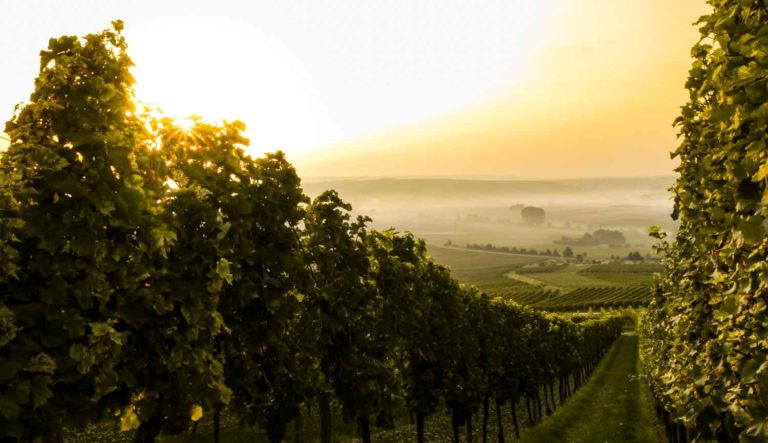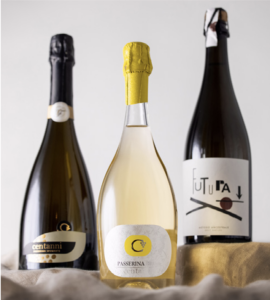As a wine enthusiast, you probably have already heard the term “terroir” and the controversy behind it. The concept of terroir is perhaps the most prominent, oldest, and recurrent in the world of wine. One that connoisseurs often can not agree upon. While some see terroir as a more technical matter, others see it as a philosophy; therefore, the prolonged debate. Despite all that, most people agree with the experts who decided that wine can indeed possess a specific smell and taste, derived from its terroir, more than four centuries ago.
What is terroir?
As you already can imagine, the concept of terroir is a complex one. However, we will approach it more straightforwardly. Terroir refers to that “sense of place” that can characterize a wine, giving it its uniqueness, which can not be replicated anywhere else, even if the same winemaking techniques are used. Terroir is a French word that comes from the Latin word terra which means earth, land, or soil.
Terroir Characteristics
Wine terroir can be shaped by various environmental factors, such as:
Climate
Indisputably the most significant element of terroir. It covers temperature, rainfall, and sunlight. Also, the climate tier is essential to consider:
- Macroclimate. It refers to the climate of the region.
- Microclimate. It has more to do with plant canopy management and can vary significantly by a few centimeters/seconds within the same vineyard.
- Mesoclimate. It mainly refers to a specific vineyard’s climate and considers aspects such as slope inclination, altitude, or the distance from large bodies of water. (1)
Soil
Certainly one of the best indicators of the terroir. It can range from volcanic to clay, sandy, loamy, calcareous, or a combination of different types of soil. Soil is also affected by water drainage, fertility, and heat retention.
Topography
Believe it or not, altitude is one of the main focuses for many vineyards that aim to produce quality wines, as some wine varieties do well at higher elevations. Therefore, features like mountains, valleys, rolling hills, rivers, and lakes are crucial for optimal wine growing.
Microbial Terroir
Another decisive aspect that gives character to the wine. You can find hundreds of years old yeast and bacteria in winemaking equipment that adds peculiar notes to the wine. Although microbes are not considered a traditional element of the terroir, they play a prominent role in viticulture.
The Distinctive Italian Terroir
It’s likely that you have a metal image of the romantic scenery of the Italian countryside. The green slopes, the cypress trees, the rustic red stone farmhouse, the deep blue waters, the crisp air, all radiant under the shining sun.
This idyllic scenery has been a source of inspiration for Italian winemakers over the centuries. The Italian territory is mainly covered by mountains (35.2 %) and hills (41.6%), this privileged terroir diversity results in a wide variety of exciting wines. (2)
Classification of the Italian Terroir
The Italian terroir can be classified by altitude as the wines of high mountain areas, wines from the hillsides, and wines from the coastal plains and inland flatlands.
The vineyards located in the Alps’ mountains experience high-temperature variation during the daytime. An excellent example of this is the wine region of Lombardy, situated at the northern point of Italy, which is famous for its sparkling wine like Franciacorta made from the chardonnay grape, which some experts consider superior to Prosecco.
The hillside wine region is distinguished by its continental climate and an abundance of spring/fall precipitation. A perfect example of this is the region of Tuscany, one of the most renowned and fruitful wine regions in Europe. Here you can find the Internationally-recognized Brunello di Montalcino, elegant, full-bodied wine from the Sangiovese grape.
The coastal plain rejoices in the Mediterranean/maritime climate that gave birth to hidden gems like the region of Le Marche. Famous for its Trebbiano and Verdicchio white grapes, which are used to produce the crisp, tangy, and mineral depth Falerio dei Colli Ascolani wine, often referred to as just Falerio.
The Italian Organic Wine Boom
With 51 million hectares organically cultivated by the end of 2015, we can assure you that organic farming is the future. Furthermore, 75 % of the world’s organic vineyards are located in Italy, France, and Spain.
Italy is the largest producer of organic wine not only in Europe but in the world. In 2018, it produced 708 million wine bottles, 68% more than in 2013. Moreover, Italy is expected to yield 924 million bottles by 2023, an increase of 31%. (3)
The tradition of winemaking in Italy dates back to more than 4000 years, which gives Italian wine producers an abundance of expertise. Possessing more than 2000 varieties and vintages of grapes, Italy has gifted us with some of the finest wines in the world. Hence, it is no surprise that they are leading the global organic wine production.
Sustainability and the Environment
Faced with the current challenge of climate change, many Italian wineries are incorporating sustainable practices along the steps of the winemaking process to protect the environment.
Cultivation of the grape, wine production, bottling, and distribution of wine can negatively impact the environment. For example, the bottle-making process, which requires a tremendous amount of energy, primarily uses fossil fuels that release dangerous amounts of greenhouse gas emissions. Because of this, the Italian wine industry is switching to lightweight glass bottles reducing emissions at the production and transport stages. Additionally, Italian vineyards are increasingly adopting solar energy as a way to minimize their carbon footprint. Other efforts are also put towards improving soil erosion and biodiversity and introducing drip and micro-irrigation practices to cut down wastewater.
Organic wine production benefits not only the environment but also wine lovers by preserving the aroma and tastes of a balanced wine perfectly. Consuming organic wine is also better for you because it contains less sugar and does not have unhealthy additives like flavoring agents or caramel coloring that can lead to headaches.
Last, but definitely not least: Italian organic wine production stands for the traditional way of making wine by working the land in a biodynamic and ecological way, maintaining an ancestral tradition and connection, which is so important.
Sources:







